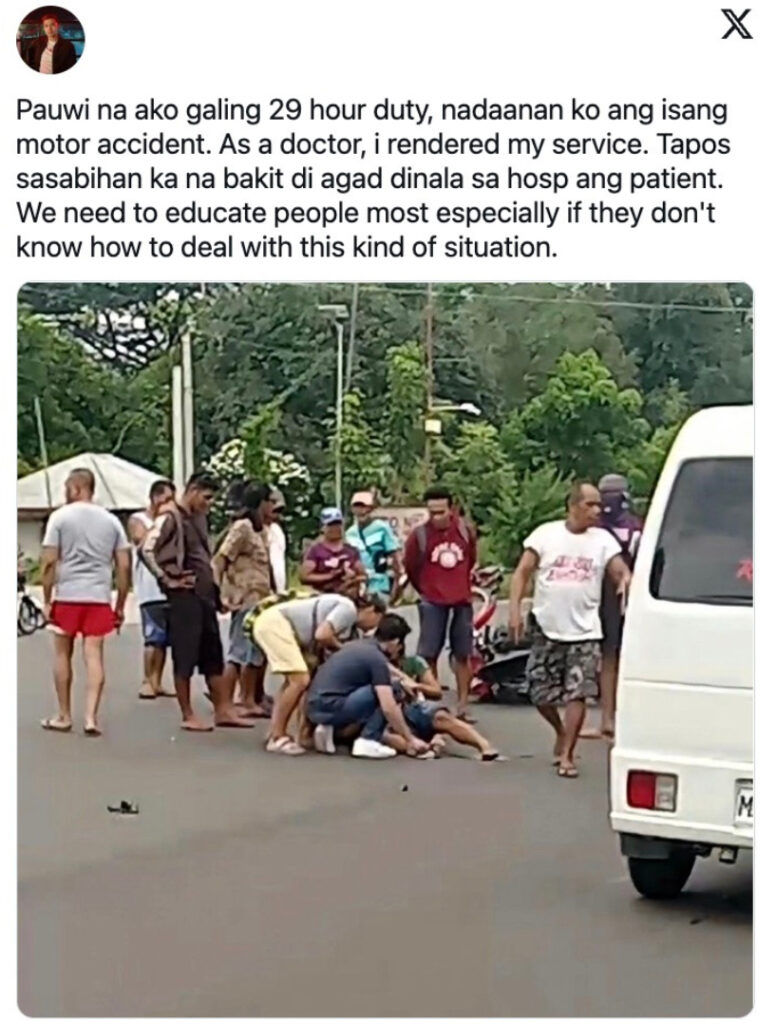Traversing Philippine roads is notoriously tricky–like, in all fronts, so it’s not surprising to see or even hear about road accidents reported anywhere in the country, especially in this age of ‘always on’ social media reporting.
The fact is, the Philippine Statistics Authority (PSA) has reported that road traffic accidents had jumped to 39% from 7,938 deaths in 2011 to 11,096 in 2021. The same agency also stated that road traffic accidents are one of the leading causes of death among Filipinos in the age range of 15 to 29 and are the leading cause of death among children.
As such, whenever people encounter accidents on the road, the first thing that always comes to mind is to help the victim almost immediately. However, without any proper knowledge of the dos and don’ts in handling these situations, it can prove fatal for the victim even with the best of intentions.
So, here’s what to do when you’re right smack in the middle of the scene of a vehicular scene (Note that these things only apply to person injured through a vehicular accident)
Do not move the injured person
When faced with the situation, many people think that the first thing to do is to move the injured—which can become a fatal mistake. Why? Because the severity of the collision isn’t always limited to what is seen on the outside. There may be internal bleeding, possible head or spinal trauma, or broken bones elsewhere in the body. Never move an injured person. However, you may arrest visible bleeding by putting direct pressure on the wound. Make observations and take mental notes of what needs to be relayed to the medics, and just wait for them to arrive.
Do not crowd the scene and act like a “know-it-all”
Bystanders are always normal in situations like this, and in some cases, they can be hindrances to the ones giving first aid. These people sometimes crowd too much, try to insert their own opinions into the already stressful situation, and put even more pressure on the ones involved. Also, crowding on an injured person restricts the air they can breathe.
The best thing that bystanders can do is to give space to the people already applying first aid and to keep to themselves. Also, ‘wag mag-marunong. You never know that you might be hurting the victim more than helping them.
However, put your pagiging marites to good use by taking photos of the accident, so the injured person and the authorities will have more reference materials for further investigation.
Once the proper authorities arrive, give all the details that you know
This one’s easy. If you’re a first-hand witness to an accident, tell the police and medical responders everything that had happened, how it happened, and other details that may not have been mentioned in the emergency call.
These 3 things may sound like a trivial thing and shouldn’t be repeated, but it somehow tends to slip through people’s minds. Some always think to move the victim away from the scene to treat them in a more undisturbed manner, but that’s a big no-no. From an X (formerly Twitter) thread that had a doctor’s perspective on what not to do in an accident, it shouldn’t be so hard to follow.

Some things are better left to authorities and medics, yes, but if there aren’t any yet at the scene, just do these 3 things. Also–learn First Aid! It will always be a useful skill.
Other POP! stories that you might like:
Being friends with your boss is a big ‘no-no,’ says workplace coach
‘Job or Task Scam’: Don’t fall prey to this Ponzi-style scheme
Mark Zuckerberg points out Elon Musk isn’t serious about cage match and calls it off